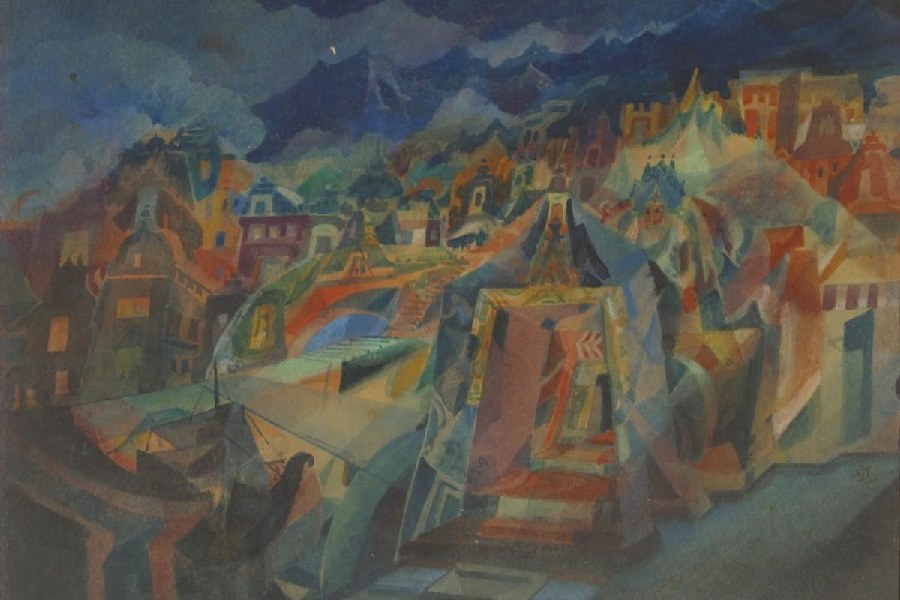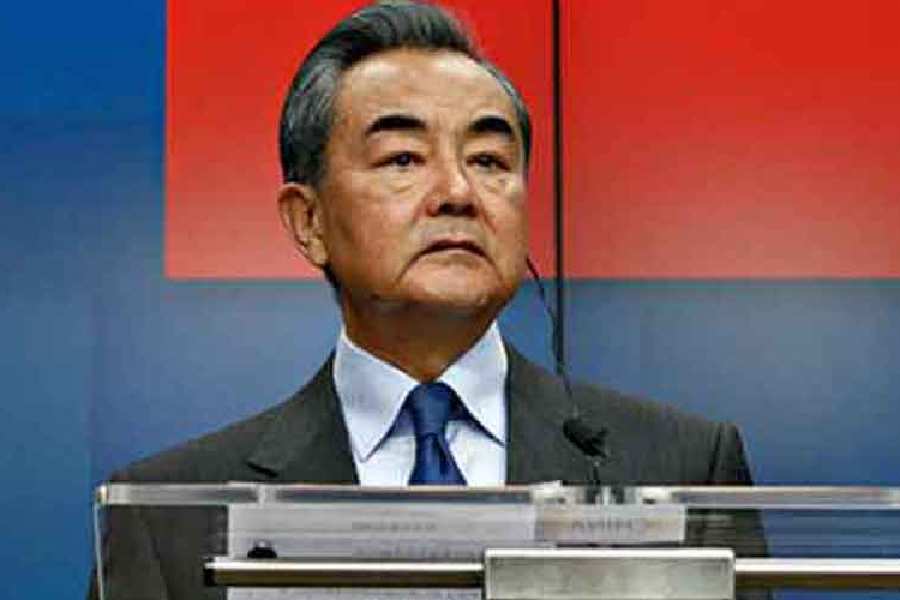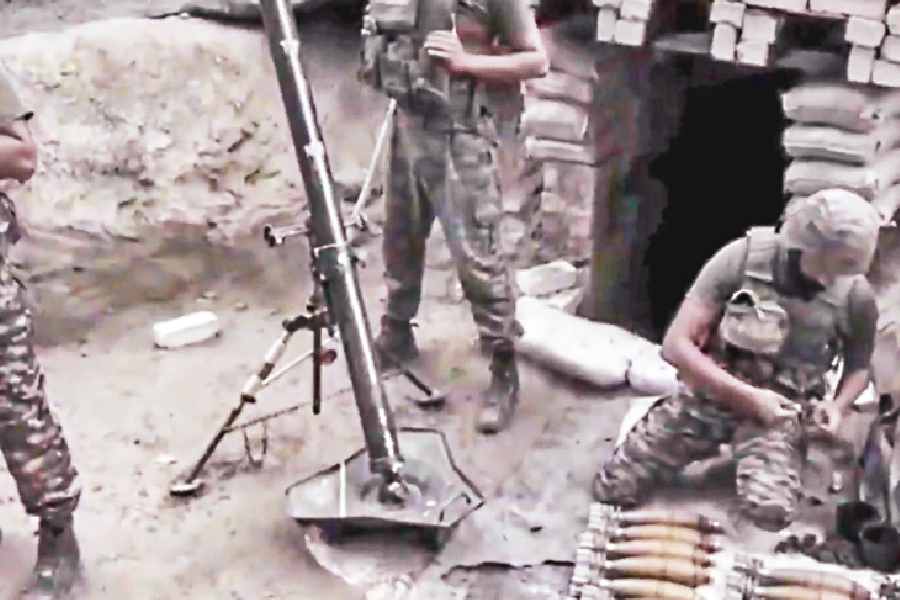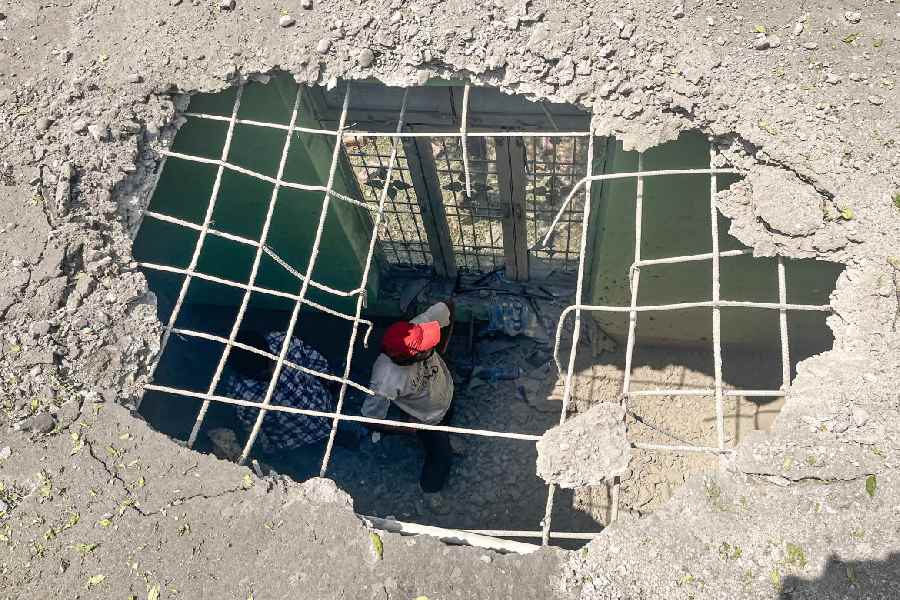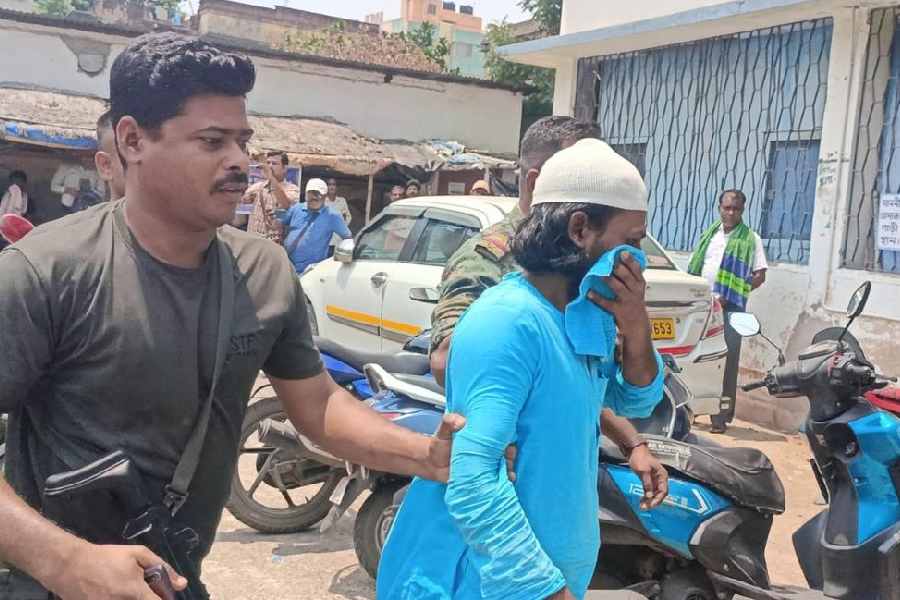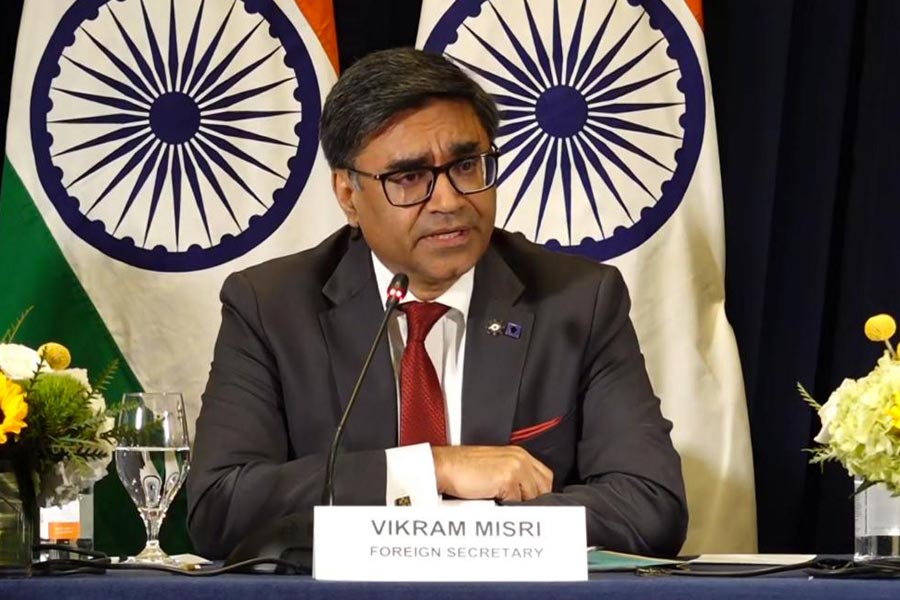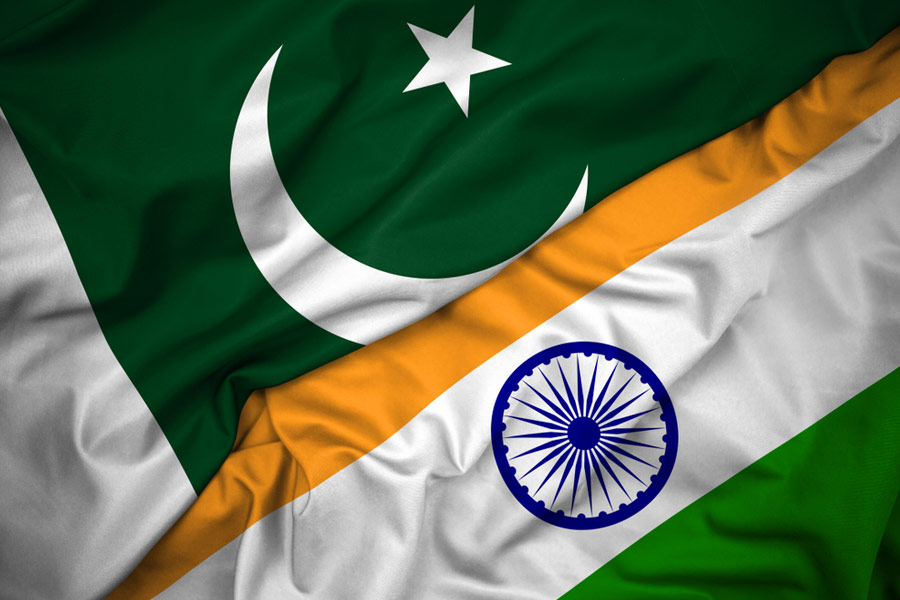Some of the rarely seen works of Rabindranath’s two nephews, Gaganendranath and Abanindranath, and his niece Sunayani Debi are now on display at the Victoria Memorial.
Part of the Calcutta leg of the Bengal Biennale 2024, the show curated by eminent art historian R. Sivakumar is on till January 5.
Sivakumar says the paintings of both Gaganendranath and his younger brother Abanindranath belong to the last phase of their career as artists.
Abanindranath’s paintings of tales from the Arabian Nights displayed at Victoria Memorial Hall belong to the “highest point” in his career. These paintings establish Abanindranath’s integrity as an artist and give the lie to charges in the 1940s that he was a “revivalist” who could not be taken seriously. Sivakumar says K.G. Subramanyan, poet Sankha Ghosh and he wanted to publish a book on this series but Rabindra Bharati Society was not interested.
Gaganendranath was paralysed after a stroke and became inactive as an artist. Abanindranath, too, stopped painting thereafter, as he used to sit next to his elder brother, a view supported by Sankha Ghosh. After 1938, his work involved Bengal folk traditions, he wrote the jatra (folk theatre) Khuddur Jatra and was preoccupied with Kutum Katam, his playful creations with found objects.
Gaganendranath’s Cubist phase lasted about six years between 1922 and 1928. His enigmatic black-and-white paintings of veiled women within cloistered interiors — possibly Jorasanko Thakurbari — on display belong to that period. These are his last works. He never dated his work. There are few of Sunayani Debi’s works in this collection.
Jayanta Sengupta, former secretary and curator, Victoria Memorial Hall, who joined in 2013 and retired in 2023, says the Rabindra Bharati Society collection, to which many of the Gaganendranath and Abanindranath paintings belong, was acquired on an “enduring loan” in 2009-10 or thereabouts.
A Gaganendranath exhibition was inaugurated in 2012 with about 108 paintings. Sengupta brought out a catalogue of the Gaganendranath paintings in 2014, and had 123 Abanindranath paintings restored, framed, and exhibited in 2015. Both exhibitions can be seen in Google Arts & Culture.
Sivakumar says Rabindranath’s paintings and drawings are rarely on display because of the “fugitive” nature of the coloured ink he used that bleaches when exposed to strong light. Ideally, Rabindranath’s works should not be exposed to more than 50 lumens, but few if any galleries in India are thus equipped. So the unseen areas of Rabindranath’s paintings under their frames are brighter than the large exposed areas.
At Visva-Bharati, Rabindra Bhavana has the largest number of 1500 to 1600 paintings in its collection. Kala Bhavana has 110 in its repository. Of these, about 80 works were on display at Nandan Kala Bhavana from November 29. The exhibition ended on December 19.
That was part of the Santiniketan chapter of the Bengal Biennale and ends on Sunday.
The exhibition was put together on short notice, and sadly, there was not enough time to publish a catalogue, as originally planned. Only a three-fold folder is out and it was distributed free.
The folder contains, besides a complete listing of the artwork on display, three images of artwork and Sivakumar’s brief introduction: “The collection represents the full range of his oeuvre chronologically and thematically, beginning with one of the few doodles not part of a manuscript…Besides, it contains several pictures in which the decorative and expressive possibilities of the arabesque are explored…Then there are faces of men and women from different strata…and of intriguing and enigmatic figures…”
Sanjoy Kumar Mallik, principal, Kala Bhavana, says: “The present exhibition began as an exhibition planned by Kala Bhavana and the World Heritage Cell, Visva Bharati, which later became a collaboration with the Bengal Biennale.”

